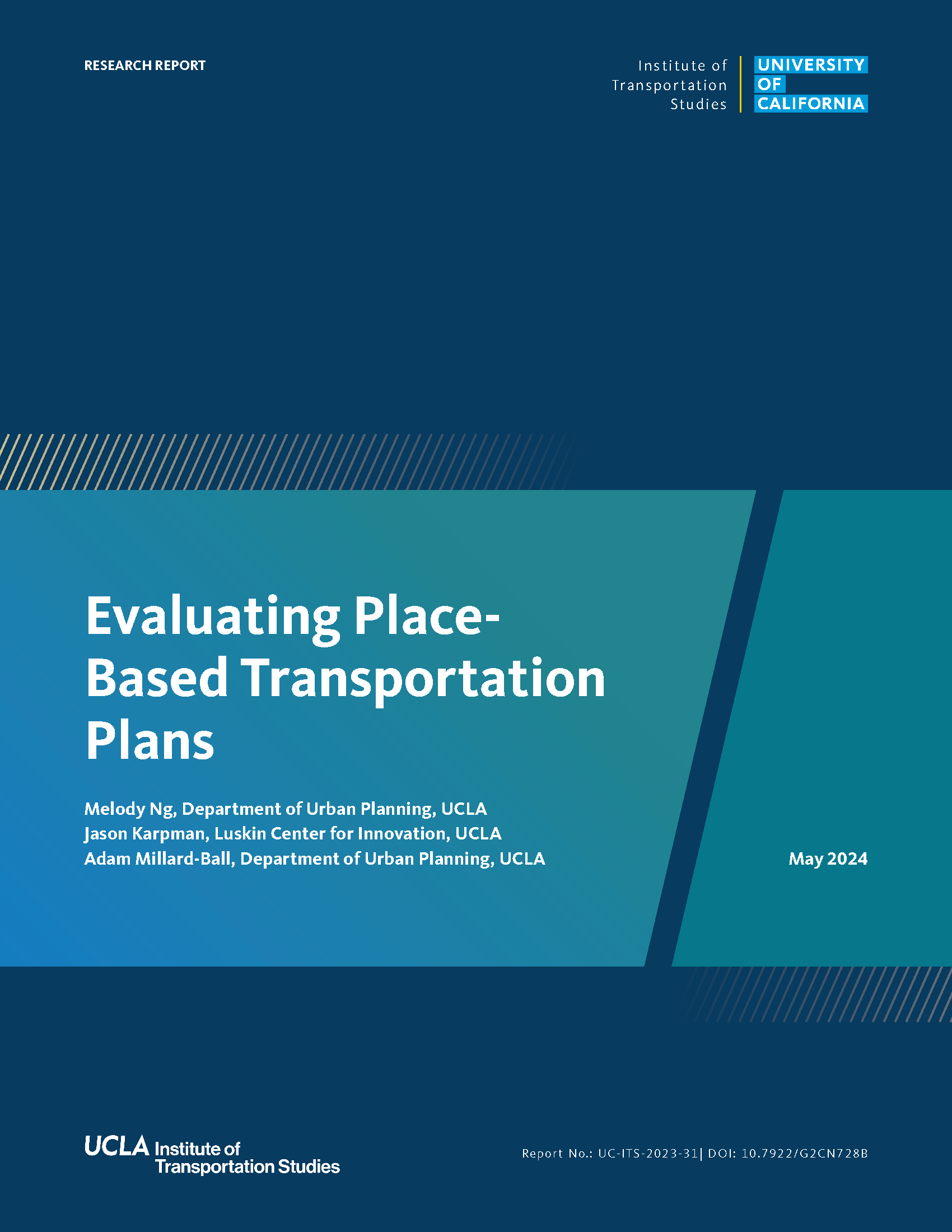Date: May 1, 2024
Author(s): Melody Ng, Jason Karpman, Adam Millard-Ball
Abstract
We ask how place-based transportation plans are being evaluated, and what insights from the broader policy and plan evaluation research literature might inform evaluation design. We complement a review of the evaluation literature with six expert interviews with 15 people. We find that California agencies and their community partners have high expectations for evaluations of place-based transportation plans. So far, however, those evaluations have been less successful in providing detailed information on outcomes and the causal impact of interventions. This does not reflect the shortcomings of the evaluation teams, but rather the inherent challenges in holistically assessing a diverse set of projects on different implementation timelines in a project area with porous boundaries. There is also a fundamental difficulty with the evaluation scale. California’s place-based transportation plans have often been evaluated individually. But in general, evaluations, particularly quantitative causal inference methods, are most effective with a larger number of projects or sites. We suggest a two-pronged approach to addressing the tensions that we identify between place-specific knowledge and generalizable conclusions. The first prong, at the site level, would emphasize process evaluations and assessment of outputs and outcomes. The second prong would focus on impacts across multiple sites and the extent to which place-based transportation programs have a causal role.
About the Project
California has increasingly turned to place-based, community-driven programs such as Transformative Climate Communities (TCC), the Community Air Protection Program (CAPP), and Regional Climate Collaboratives (RCC) to address the twin priorities of climate change and environmental justice. Transportation improvements are at the heart of these cross-sectoral programs because of their potential to mitigate air pollution, greenhouse gas emissions, and inequities in access to transportation. In this synthesis, we ask how place-based climate action efforts are being evaluated, and what insights from the broader policy and plan evaluation research literature might inform evaluation design.


